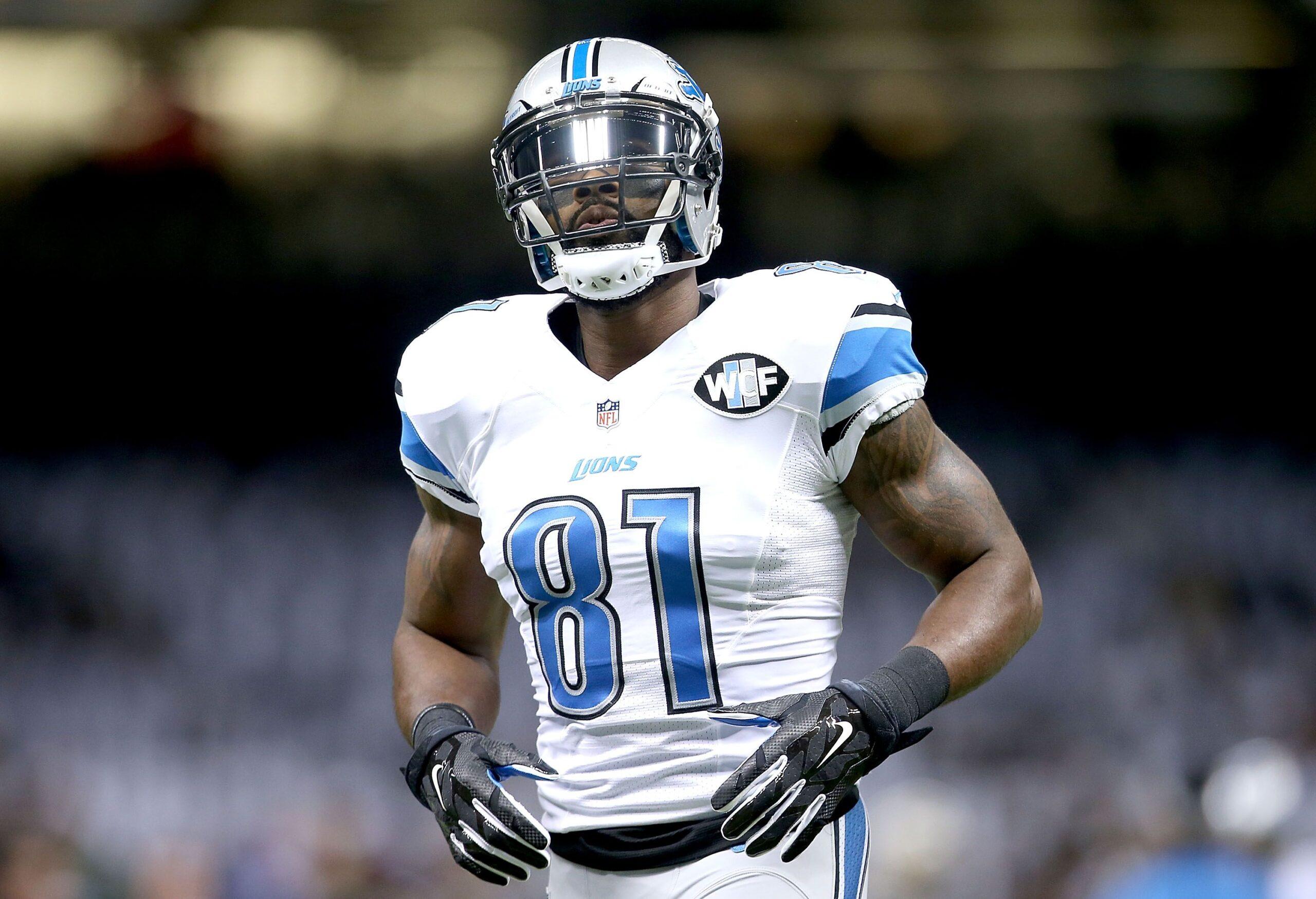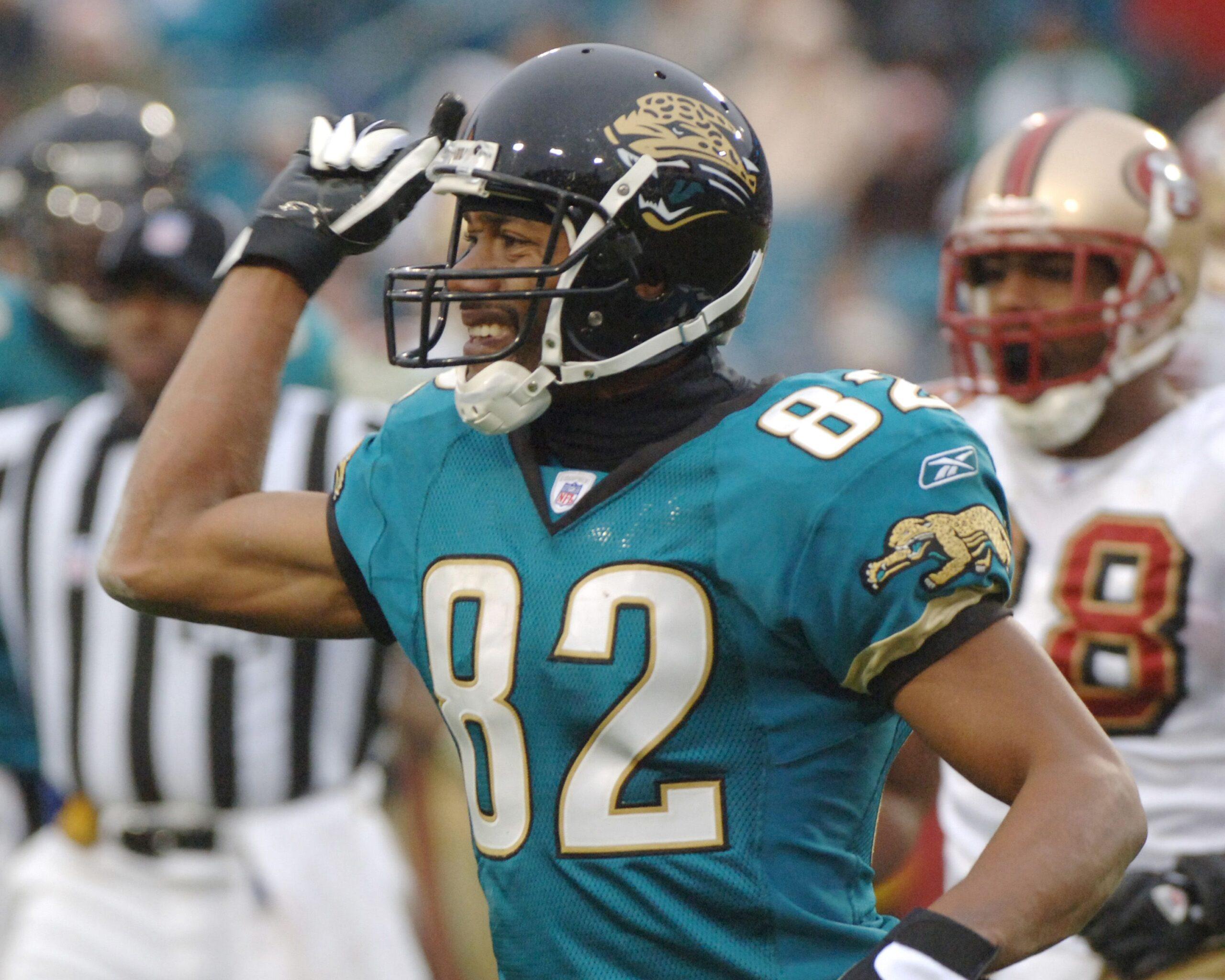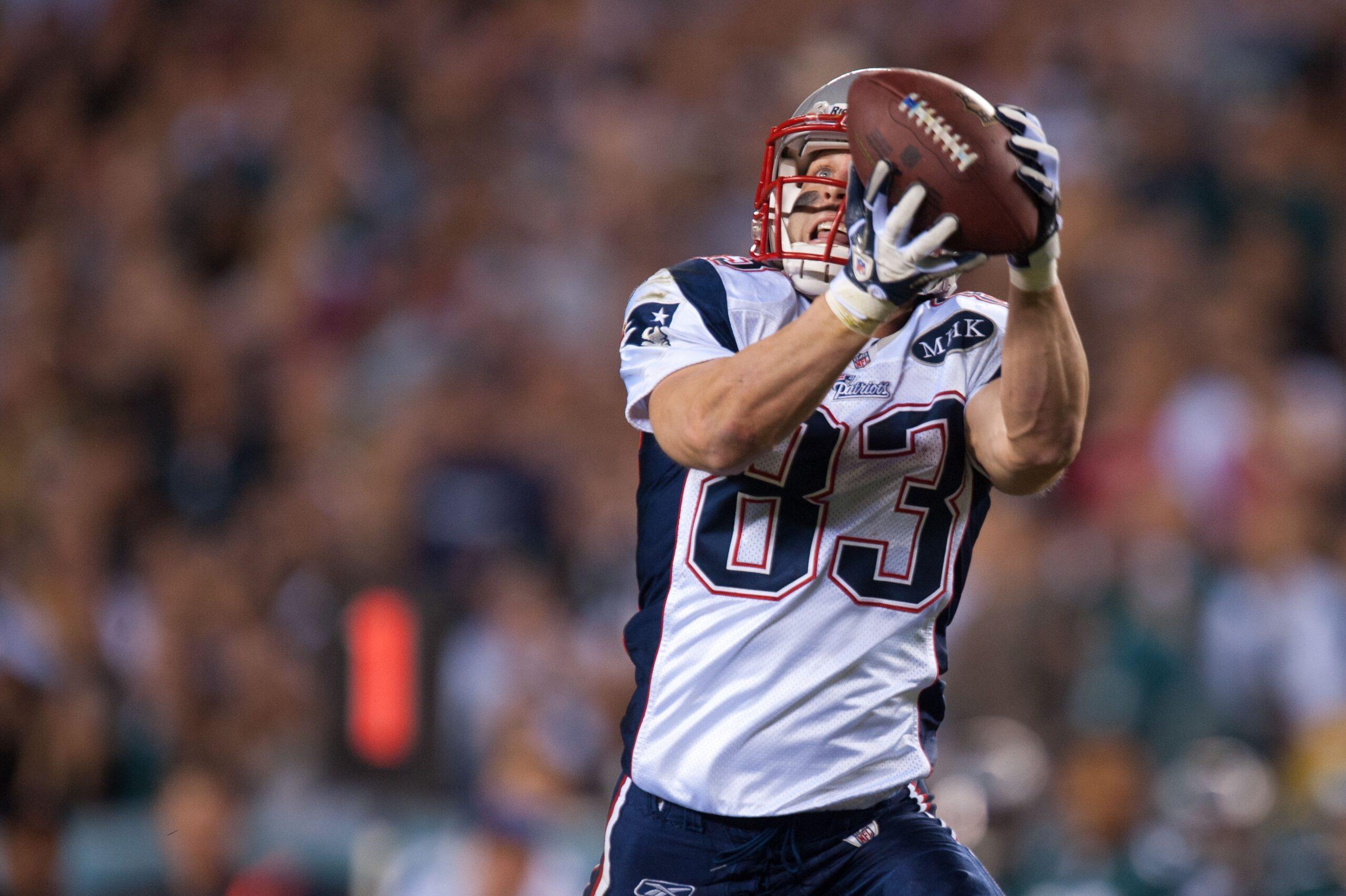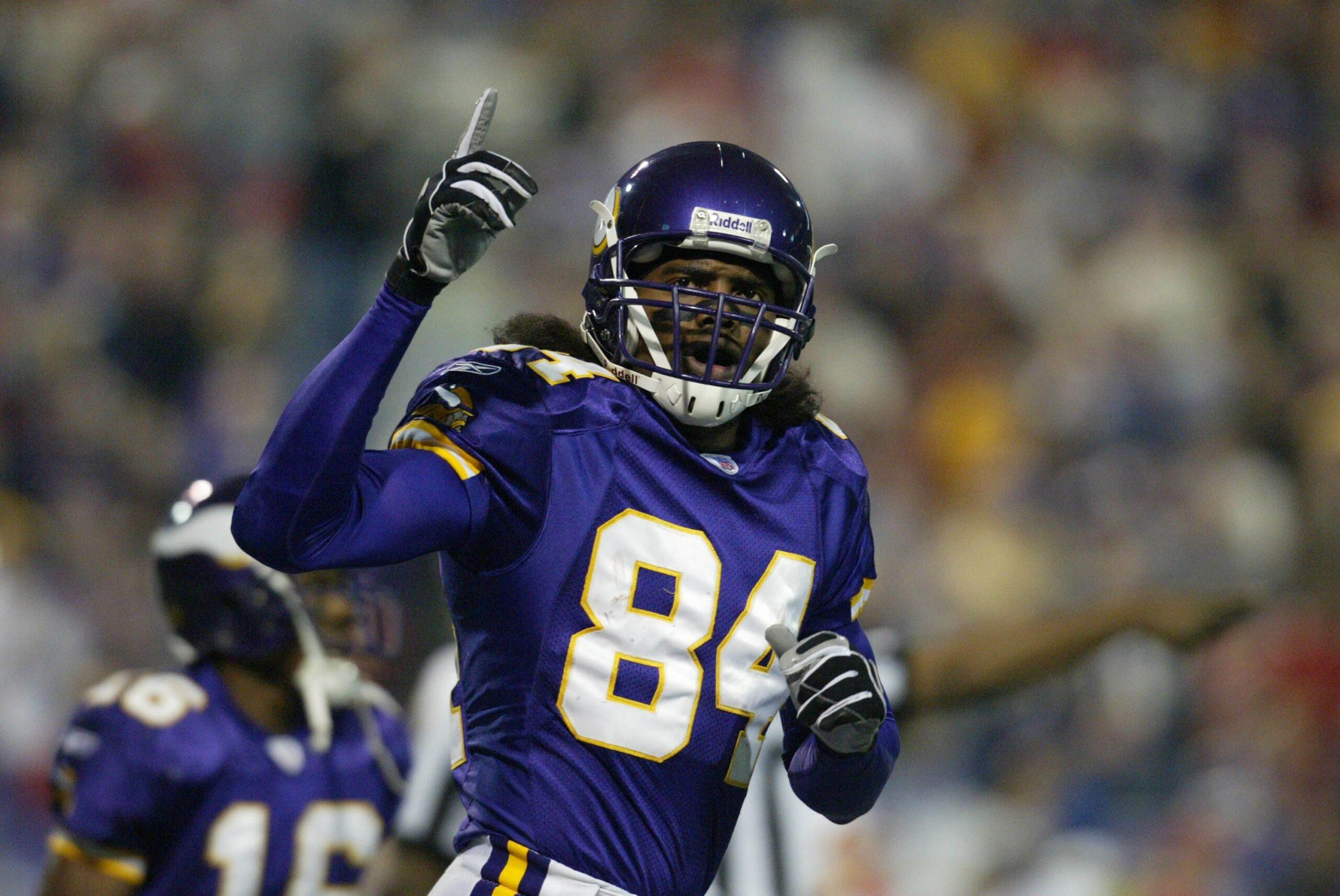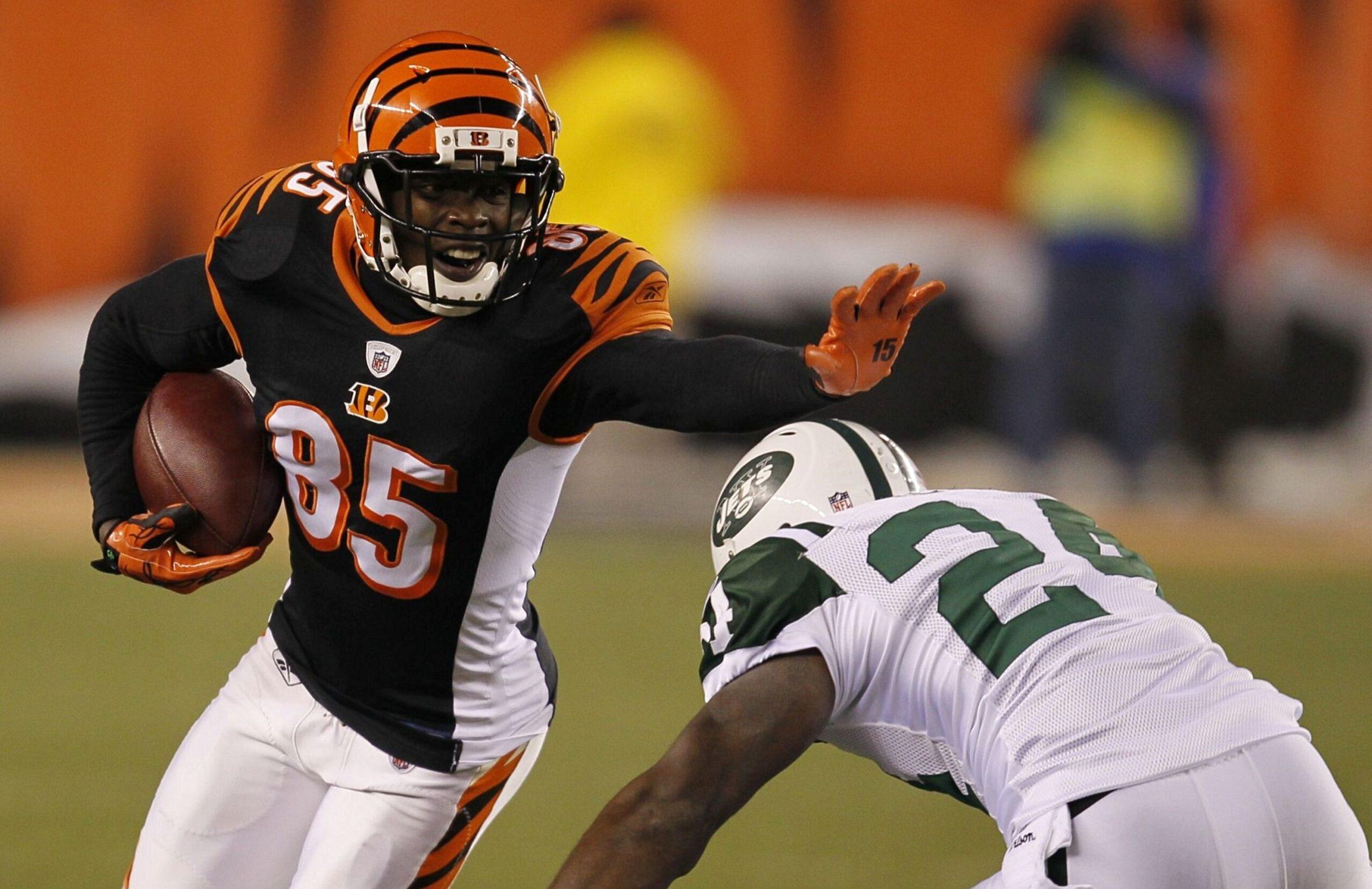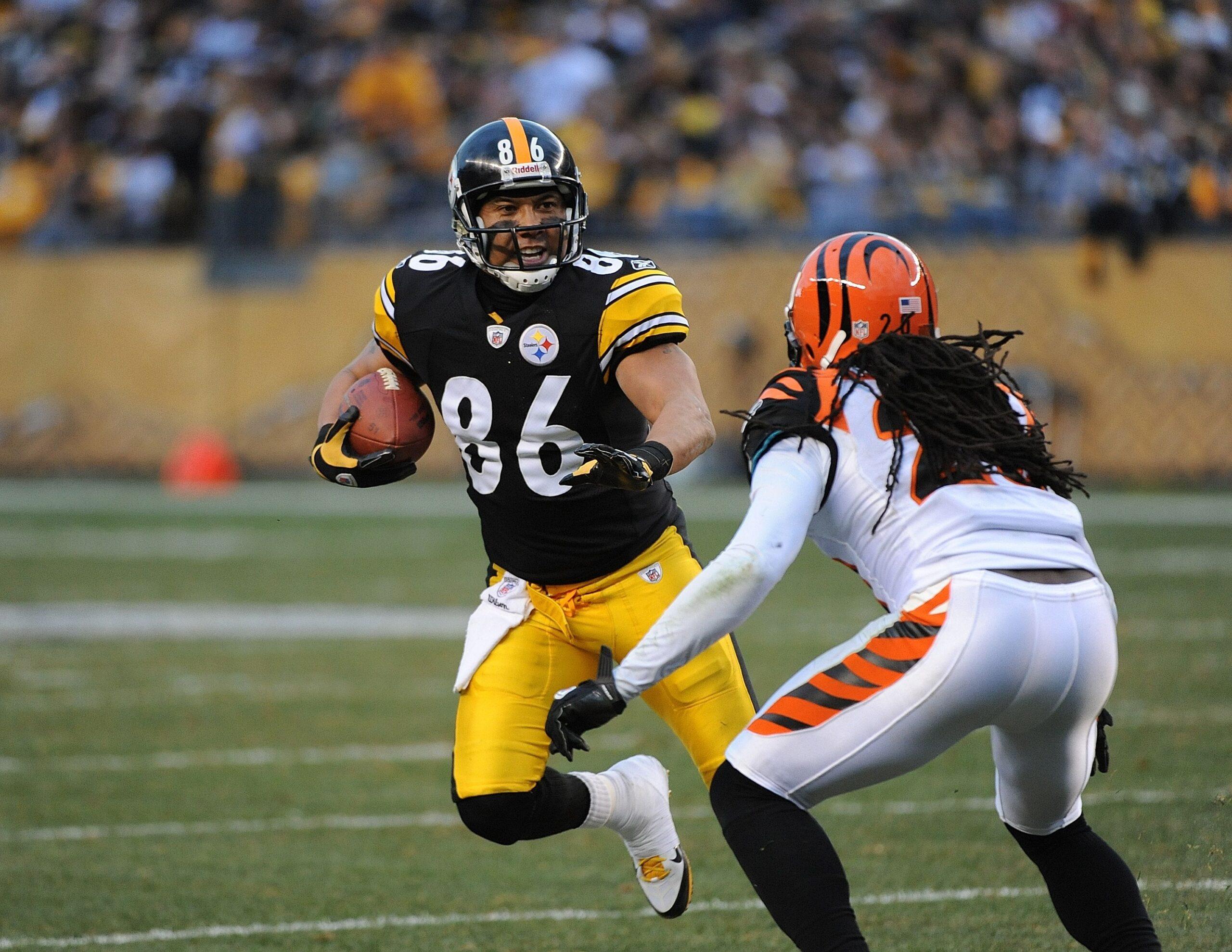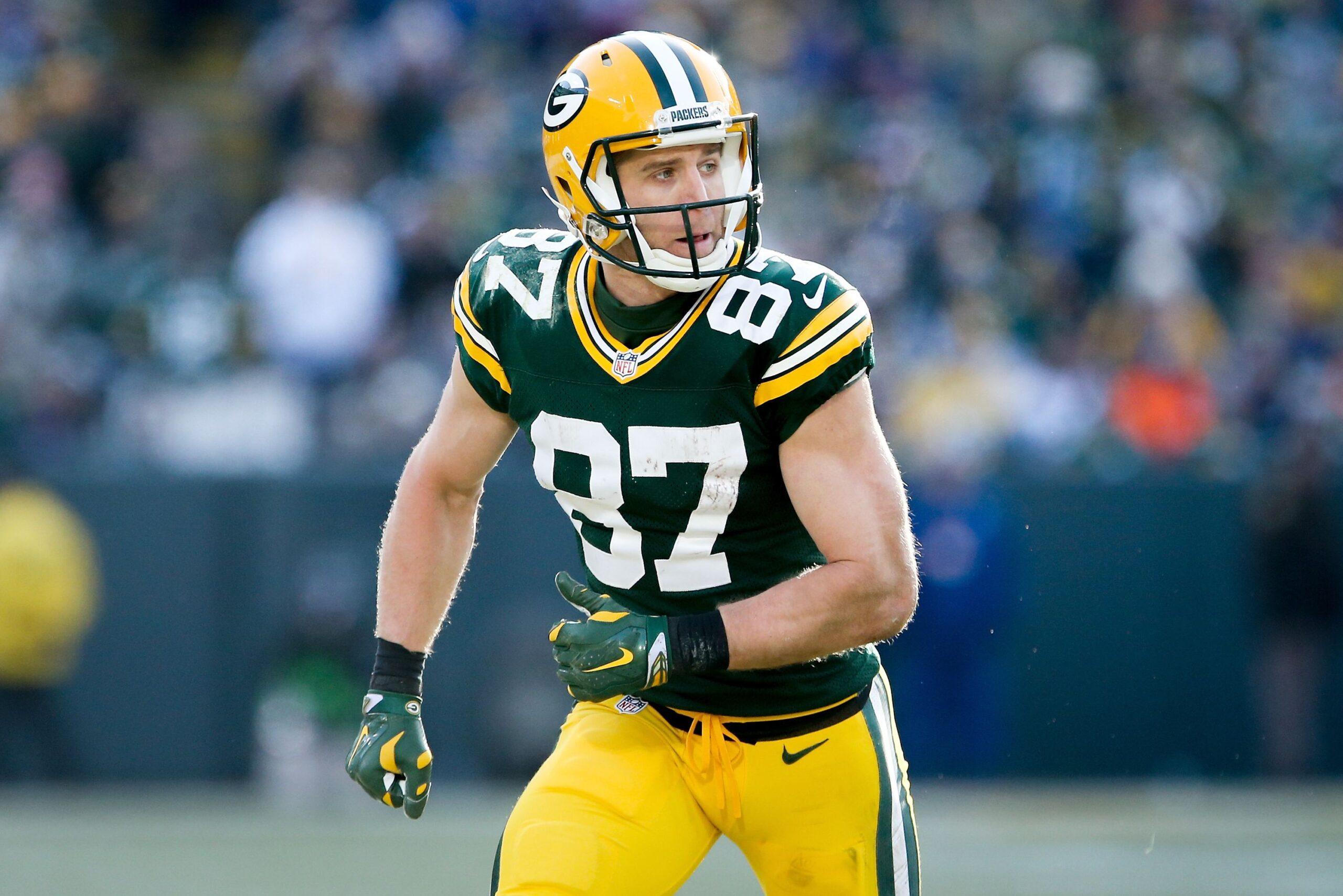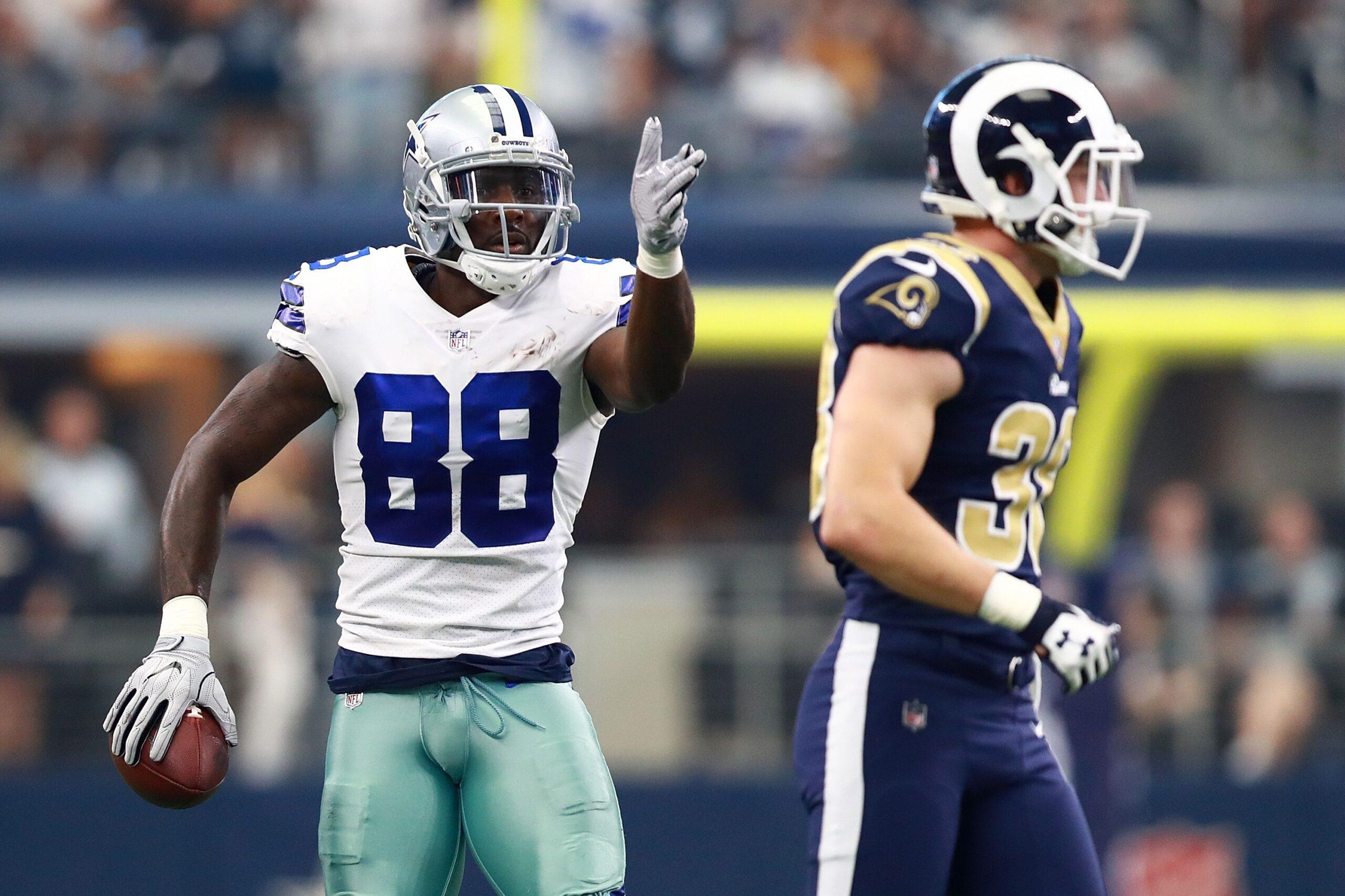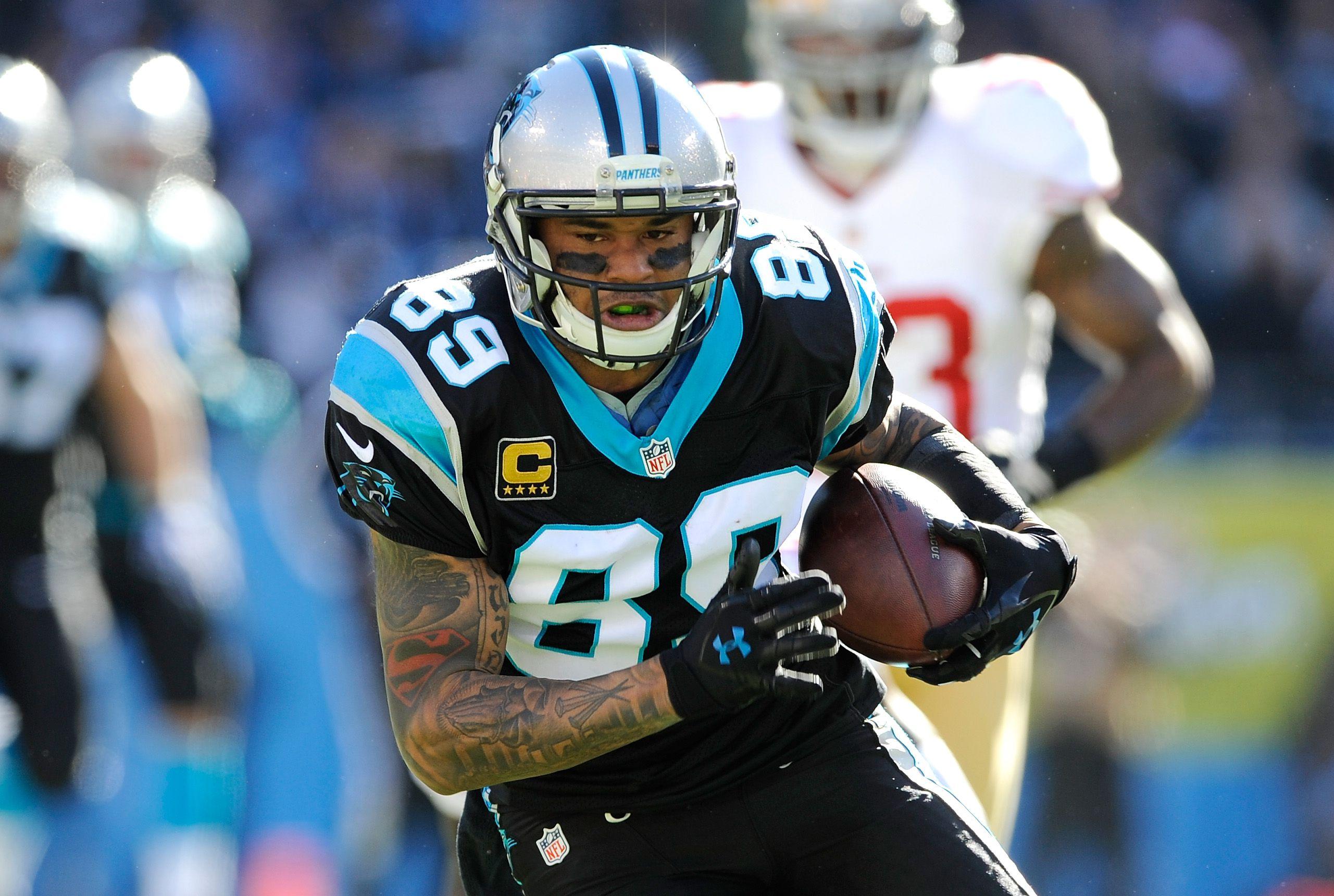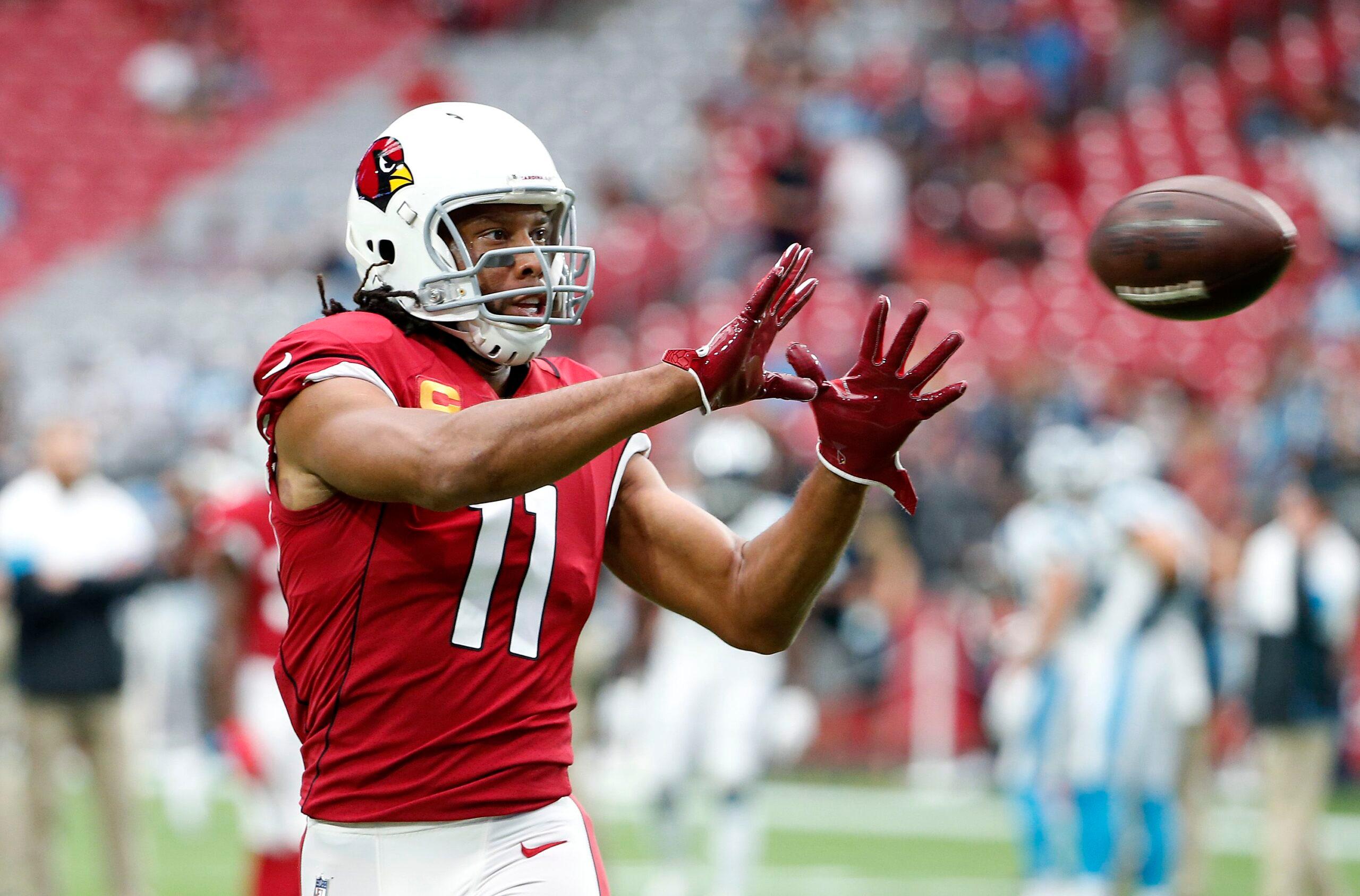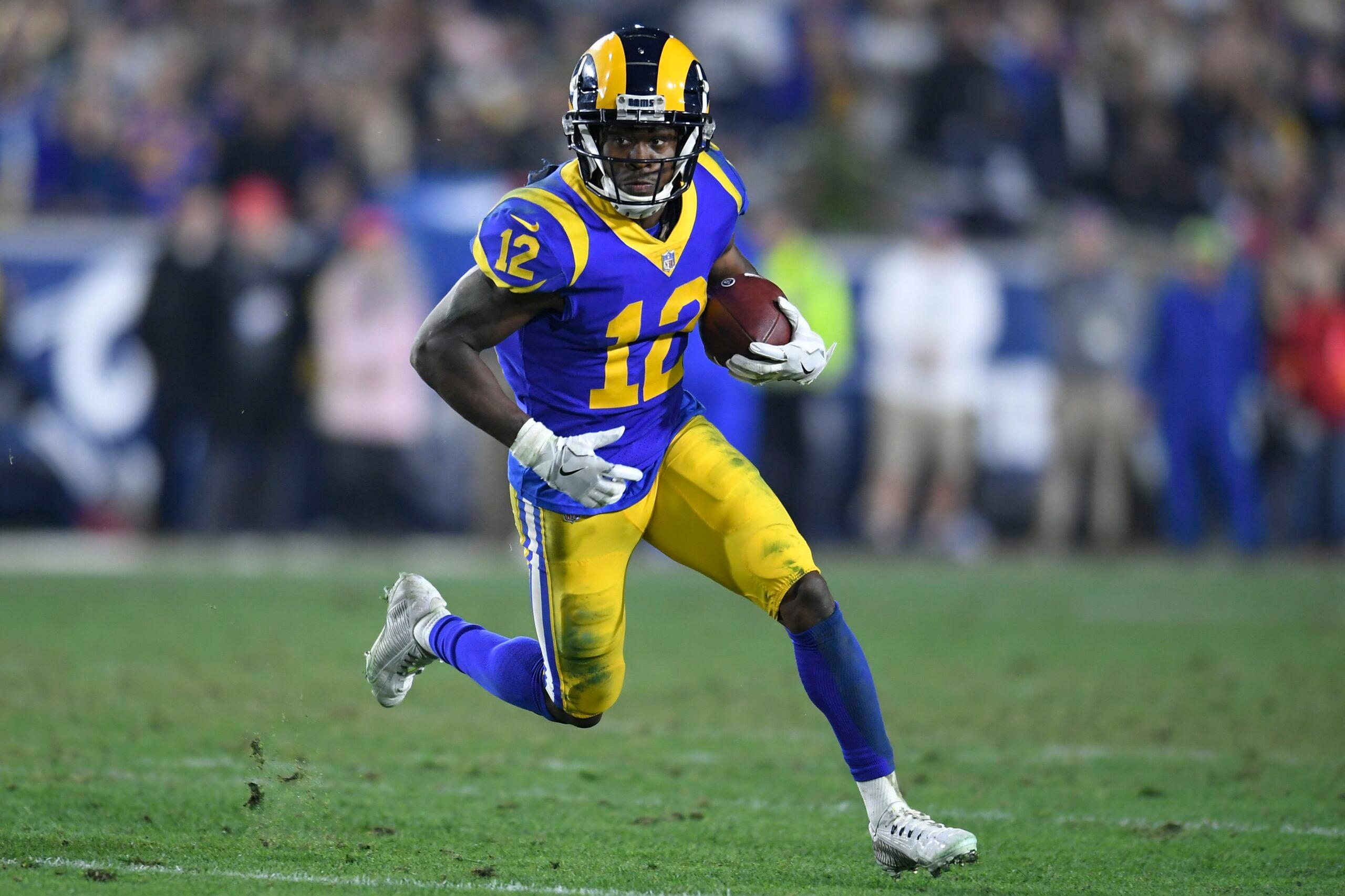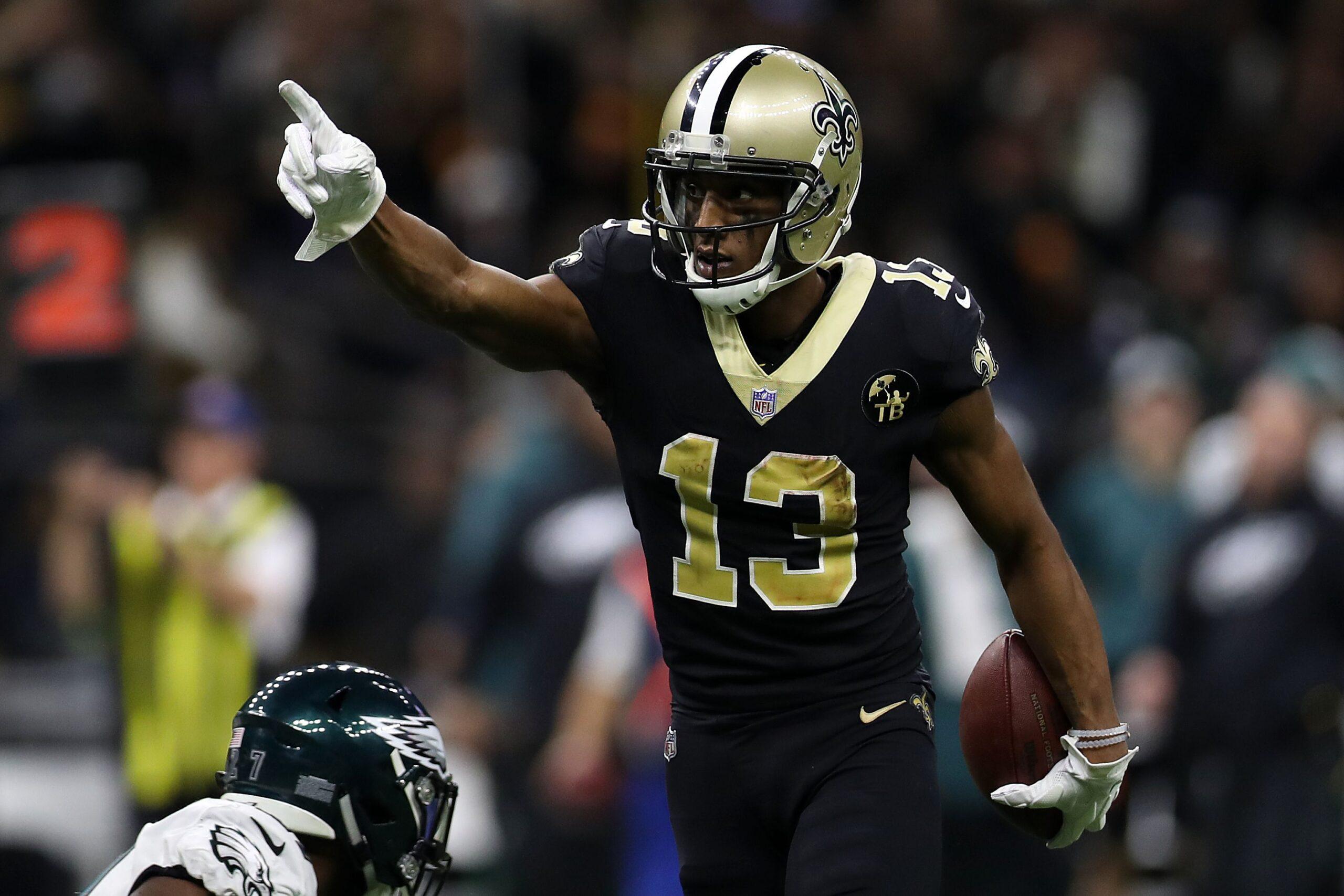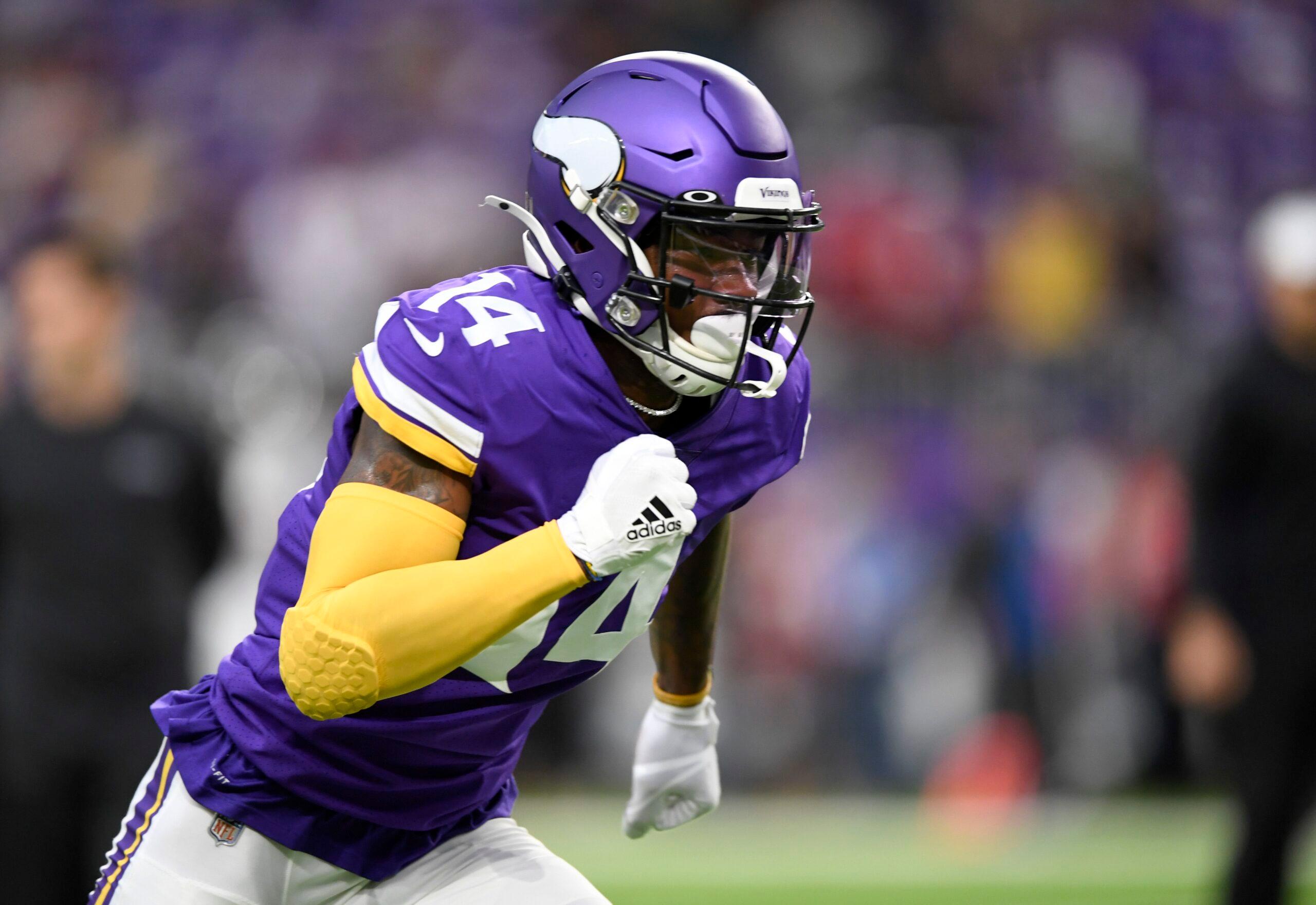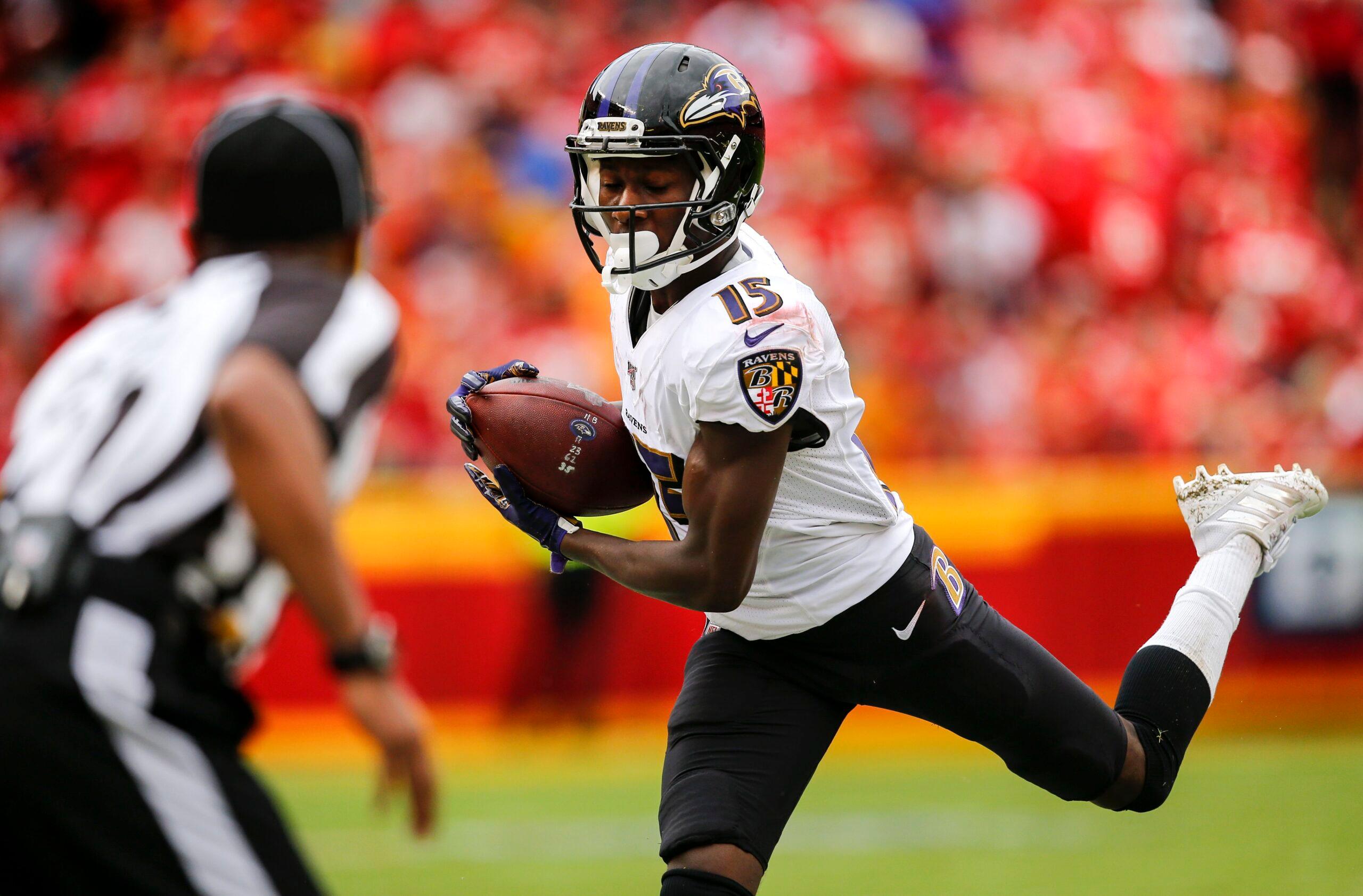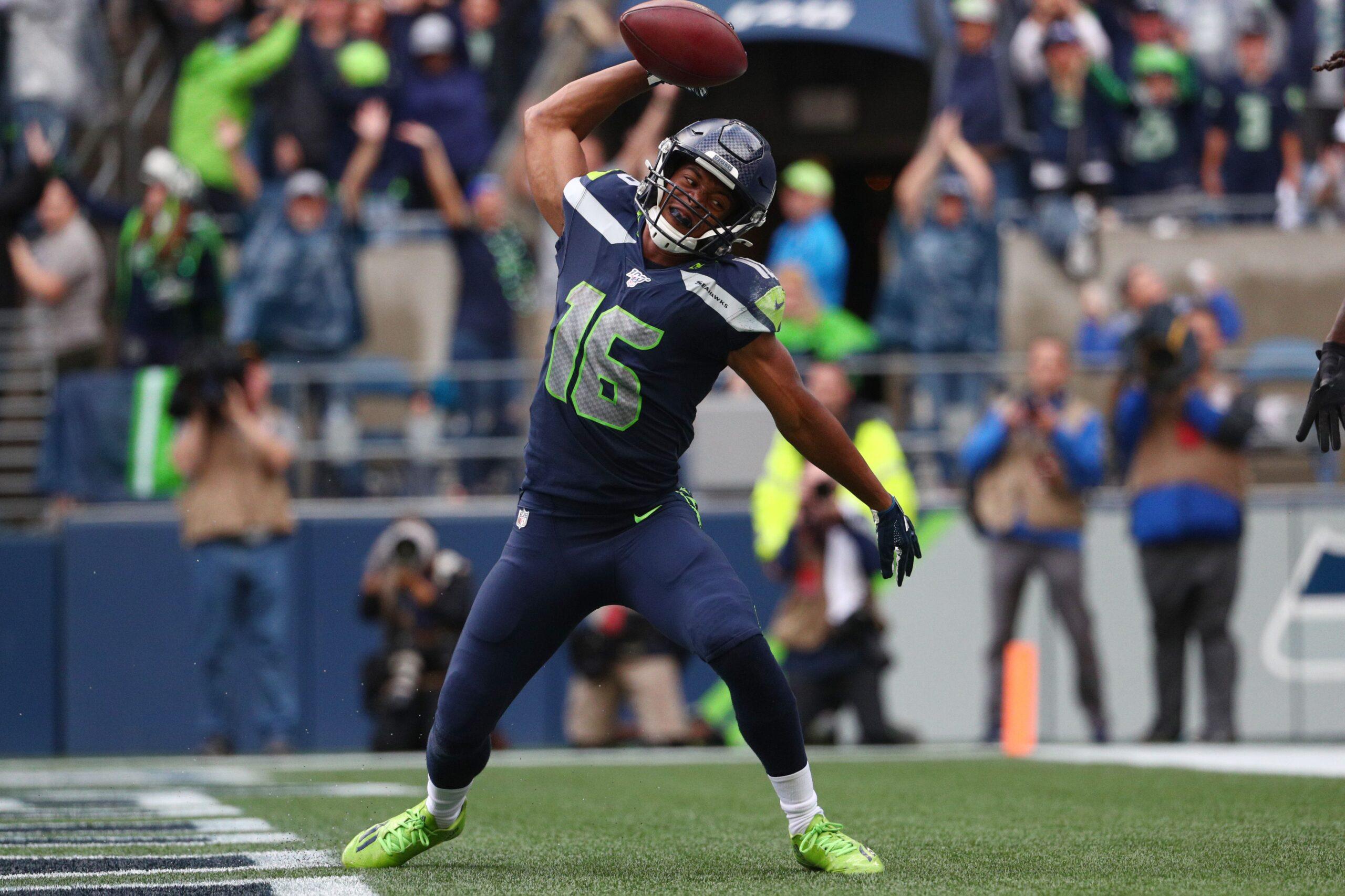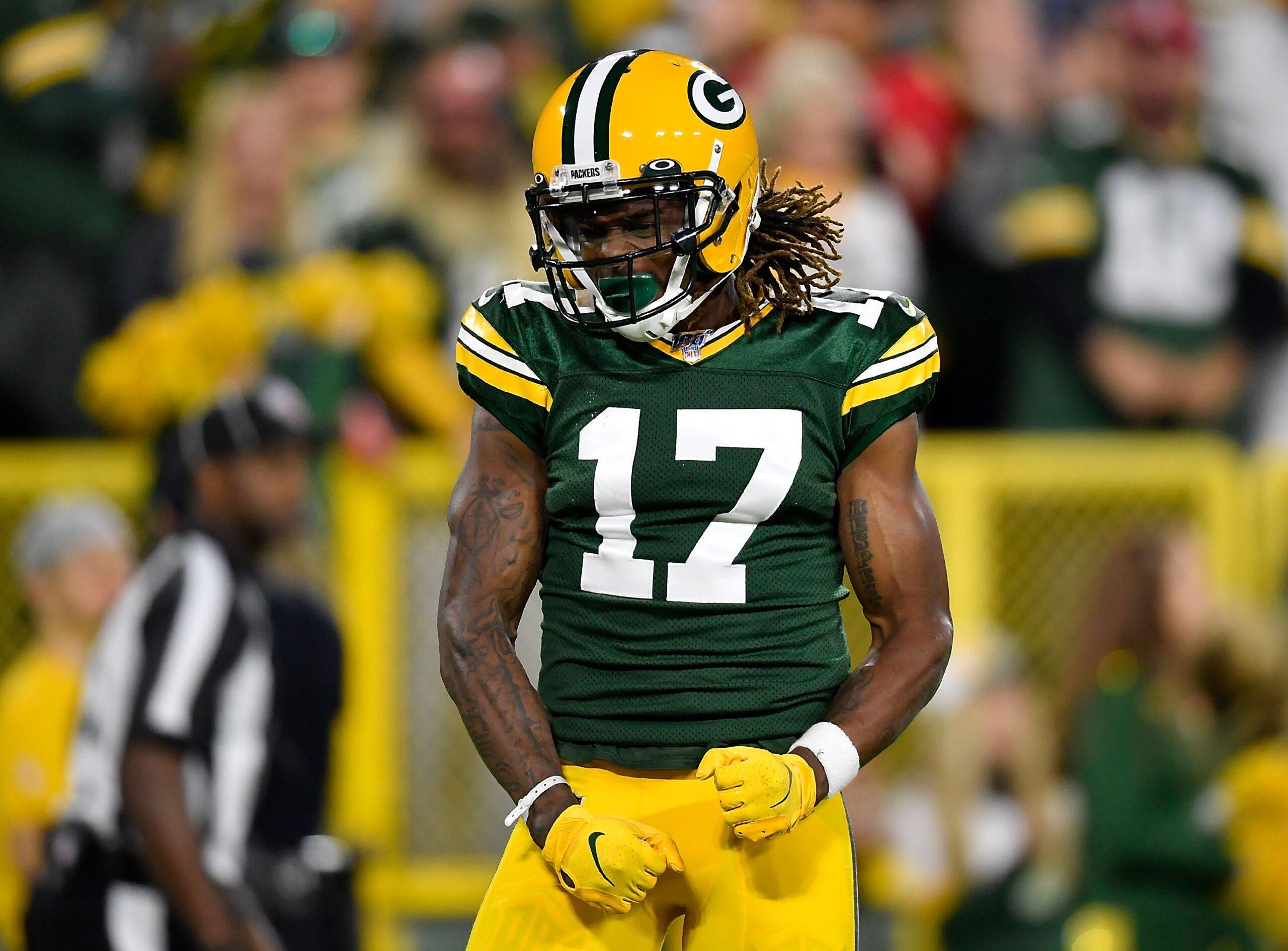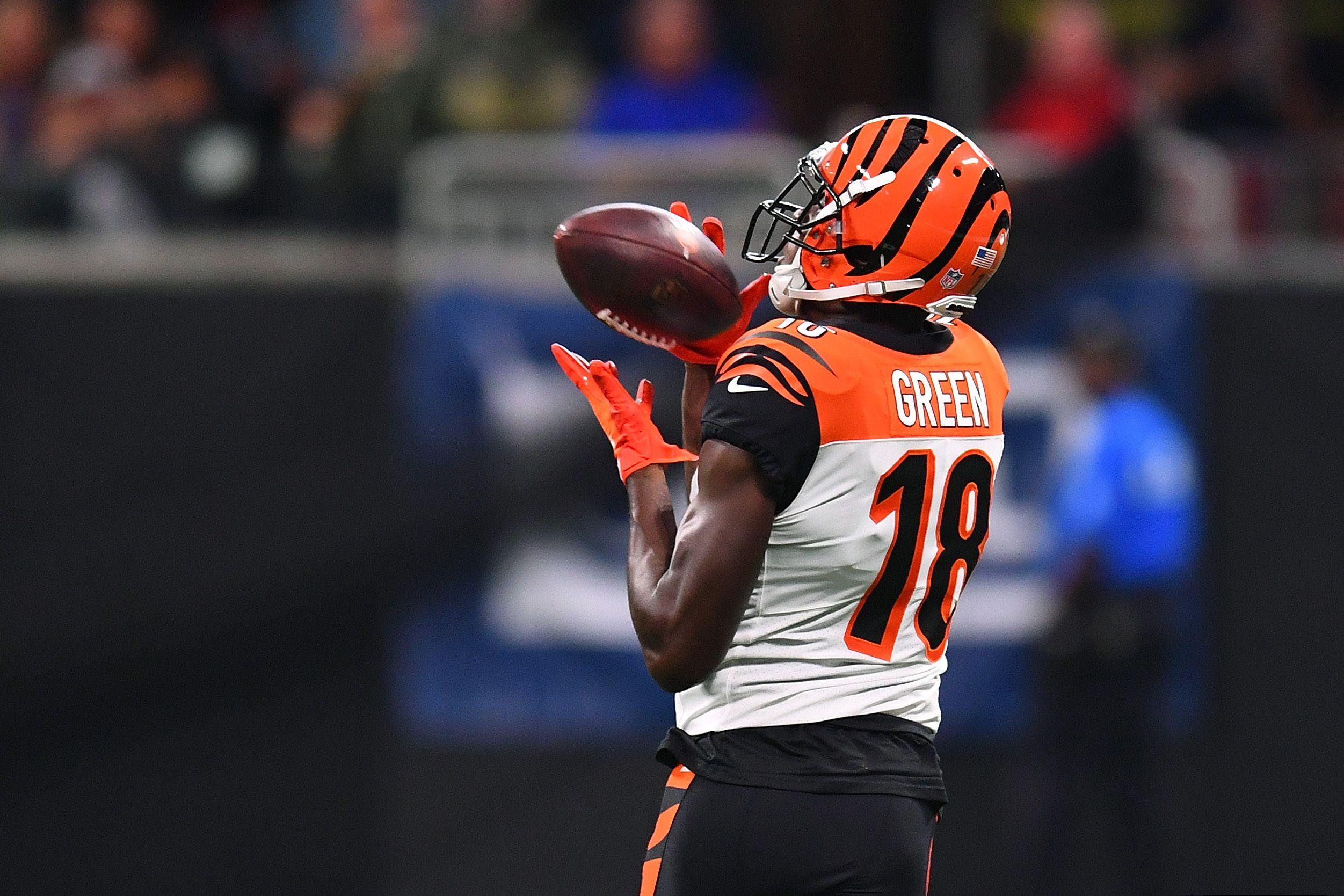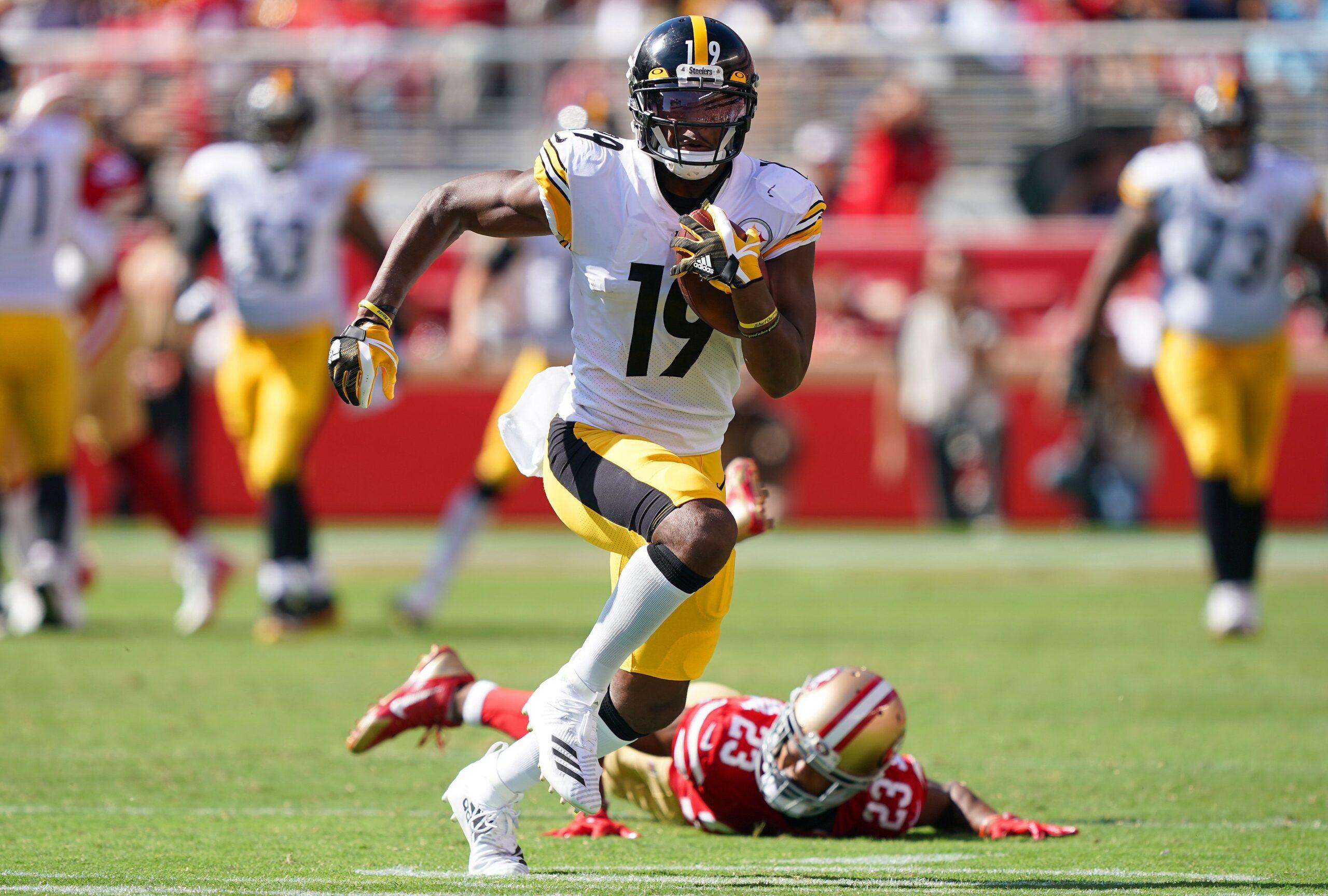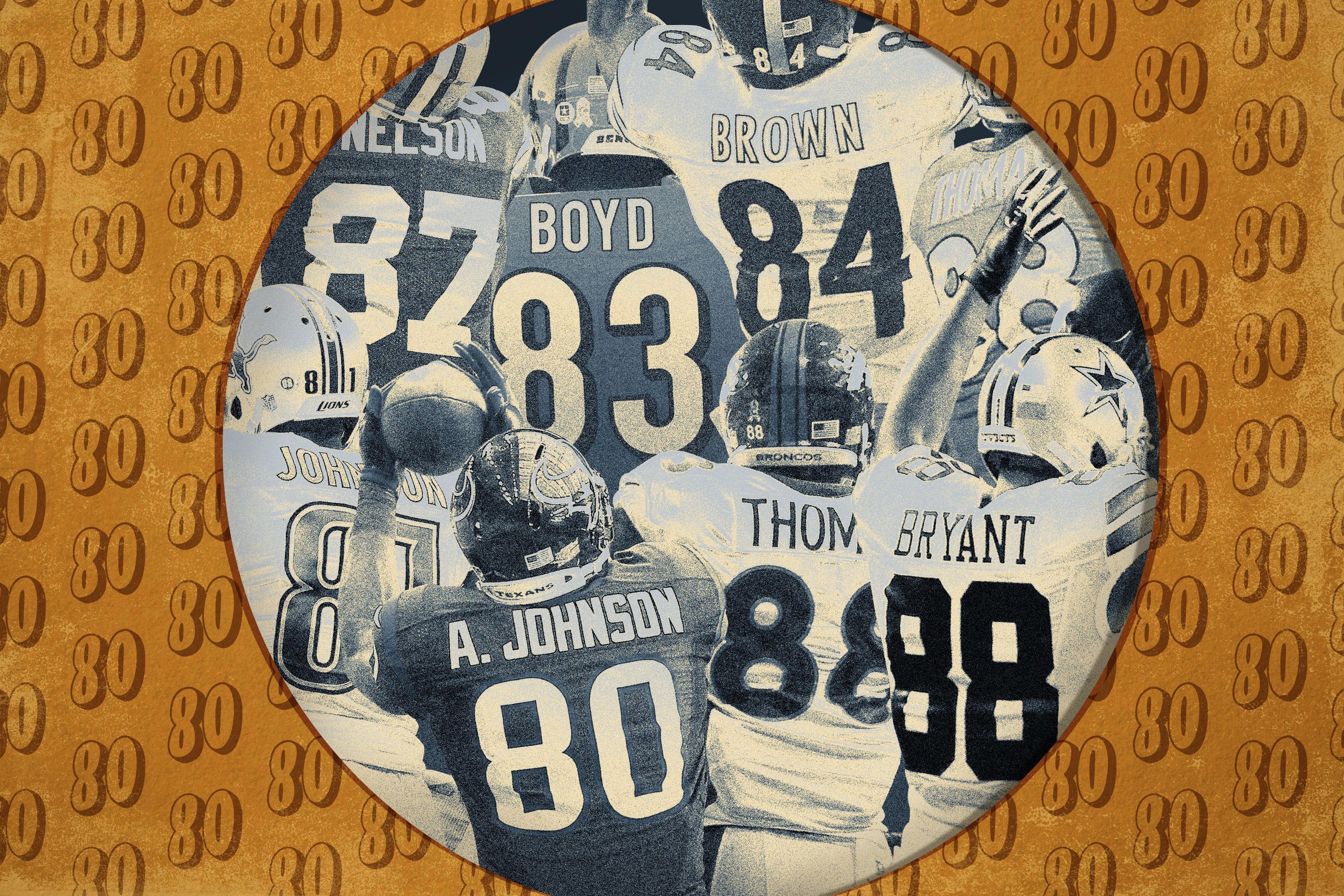
The era of wide receivers wearing uniform numbers in the 80s is over. Most football fans have probably noticed receivers wearing numbers in the teens for a while, but I am here to report that low-numbered receivers no longer represent a niche trend, or even a 50-50 split of the receiver market share. They are now the standard, and those wearing conventional numbers have become the outliers. Although the trickle has been steady over the past 20 years, 2019 officially marks the season when the high-numbered receiver emerged as an endangered species.
I was alerted to this development by a Pete Blackburn tweet from a couple of weeks ago. It posited a simple question: Who is the best wide receiver in the NFL with a number in the 80s?
If you look at the replies to that tweet, there was no obvious answer. Some proposed that the best receiver with a number in the 80s was Julio Jones, who wears no. 11. Others pitched A.J. Green (no. 18), Mike Evans (no. 13), and Marvin Jones Jr. (no. 11). Travis Kelce was floated, and the Chiefs star does indeed wear no. 87. Of course, Kelce isn’t a receiver—he’s a tight end.
The actual answer is Jarvis Landry (no. 80), the second most famous wide receiver on the Browns. He’s the only player with a number in the 80s who ranks among the top 10 at his position in receiving yards through Week 4 this season. Landry isn’t even an 80s guy by choice—his preferred number is 14, but he was forced to switch after moving from Miami to Cleveland in 2018 because the team had already retired no. 14 in honor of legendary quarterback Otto Graham. The next-best receiver who wears a number in the 80s is Tyler Boyd (no. 83), the second most famous wideout on the winless Bengals. He ranks 22nd at the position in receiving yards in 2019. The only other top-50 receivers with numbers in the 80s are the Giants’ Sterling Shepard (no. 87) and the Packers’ Marquez Valdes-Scantling (no. 83), down in 39th and 41st place, respectively.
In the past year, the two remaining superstar receivers who had jersey numbers in the 80s ditched them: Antonio Brown, who wore no. 84 in his nine seasons with the Steelers, started wearing no. 17 after an offseason that saw him go from Pittsburgh to Oakland to New England. He was cut by the Patriots on September 20 and seems unlikely to play in the league ever again. Amari Cooper, who wore no. 89 during his tenure with the Raiders, switched to no. 19 after being traded to the Cowboys last October. With a new team and new digits, his quality of play instantly improved.
Of the 198 passing touchdowns thrown in the NFL this season, only 13 (6.6 percent) have gone to wide receivers wearing numbers in the 80s. There are only two players who have numbers in the 80s and could be considered their team’s best receiver: the Giants’ Shepard and the Titans’ Corey Davis (no. 84). The receivers with jerseys in the 80s are often end-of-roster guys who were assigned whichever numbers were left over in training camp. According to the Ourlads positional depth chart, just nine of 77 players listed as starting NFL wide receivers wear numbers in the 80s (11.7 percent), compared to 25 of 71 backups (21.6 percent). There are not many high-numbered receivers, the ones who exist do not have big roles, and the ones who have big roles are mostly playing poorly.
This shift has happened quickly. As recently as 2014, three of the top four players at the position in terms of receiving yards (Brown, Jordy Nelson, and Demaryius Thomas) wore numbers in the 80s. Now, it’s two of the top 25 and four of the top 50. It seems as if the high-numbered receiver is going the way of leather helmets and, uh, running backs.
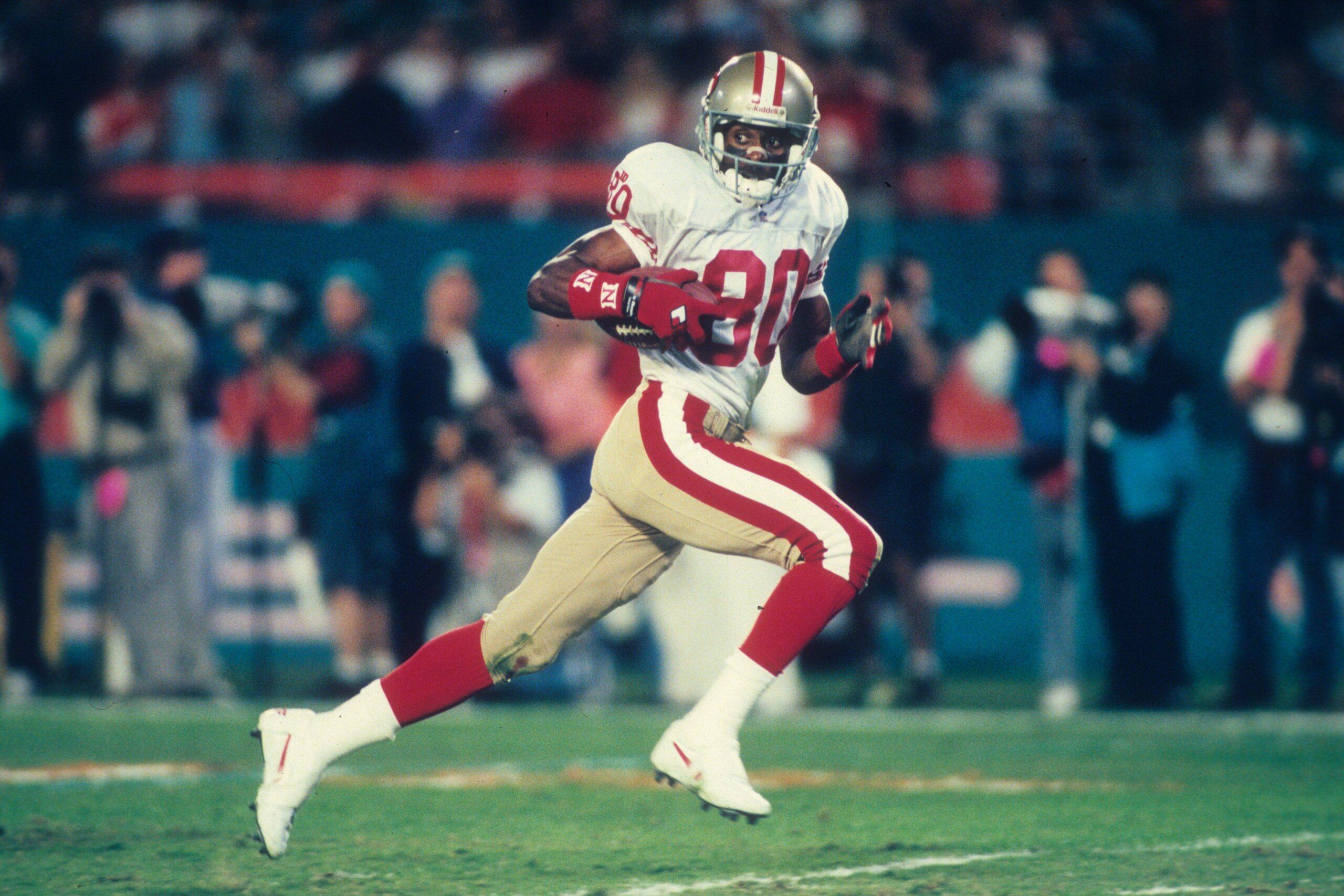
Jerry Rice
In a way, receivers wearing low numbers is less a newfangled trend than a return to football’s roots. The first legendary pro receiver was Don Hutson of the Packers, who wore no. 14. Other early Hall of Fame receivers include Don Maynard (no. 13), Lance Alworth (no. 19), and Fred Biletnikoff (no. 25). In the fledgling days of the sport, there were no rules designating that position groups had to wear certain numbers. Take the dominant Browns teams of the late 1940s and early 1950s, which saw Graham throwing to Dante “Gluefingers” Lavelli (no. 55) and Mac Speedie (no. 58). I bring this up mainly to point out that there was a football team whose top receivers were named Dante “Gluefingers” Lavelli and Mac Speedie, but the uniform numbers are interesting too.
As the NFL approached modernity, though, jersey-number standardization became the norm. In 1973, the NFL installed uniform restrictions that have more or less remained unchanged to the present day. Per those 1973 rules, receivers were only allowed to wear numbers between 80 and 89. However, teams were allowed to break the rules during training camp, when rosters expanded beyond the 53-man regular-season limit, making it hard to fit every player into the proper slots.
That was the situation for Keyshawn Johnson when the Jets drafted him first overall in 1996. No. 19 had no special meaning for Keyshawn, who wore no. 3 during his college career at USC. (While the NCAA rule book “strongly recommends” certain uniform numbers for position groups, the only hard-and-fast rule is that offenses must go into every play with five linemen wearing numbers between 50 and 79.) When Johnson was drafted, the Jets had already issued every number from 80 to 89, though, so he was assigned no. 19. (Hey, 1996 Jets equipment staff: Maybe prioritize getting your no. 1 pick the number he wants? Sheesh.)
In a strange twist, Johnson loved the number, deciding to keep it even after numbers in the 80s opened up. An old ESPN article explained that neither the NFL nor the Jets could fully remember why Johnson was allowed to keep wearing no. 19 into the regular season—just that Johnson was “very persistent” about it. Johnson was a perfect trendsetter, a brash superstar with dynamic skills and a legion of haters. His number was yet another representation of his iconoclastic ways. Other players wanted in, but the league remained steadfast in forcing every other receiver to wear numbers in the 80s for almost a decade.
Until 2004, that is, when the league made its first change to its uniform numbering policies in 20 years by opening up nos. 10 through 19 to wide receivers. There was good justification for the change: The passing game had grown significantly in importance over the course of three decades, and the majority of teams were rostering at least five receivers. Factor in the presence of three tight ends (also required to wear numbers in the 80s) on many rosters and the fact that some franchises had retired the jersey numbers of a handful of receivers, and teams were simply running out of space. Left unsaid was the other reason: Players wanted to be like Keyshawn.
It soon became a prerequisite for any young incoming star receiver to wear a number in the teens. In 2004, the first year after the rule change, the top three wide receivers taken in the draft (Larry Fitzgerald, Roy Williams, and Reggie Williams) all chose to wear no. 11 to begin their NFL careers. In the 15 drafts since, only four times has the highest-drafted receiver chosen to wear a number in the 80s (Calvin Johnson, Thomas, Cooper, and Davis).
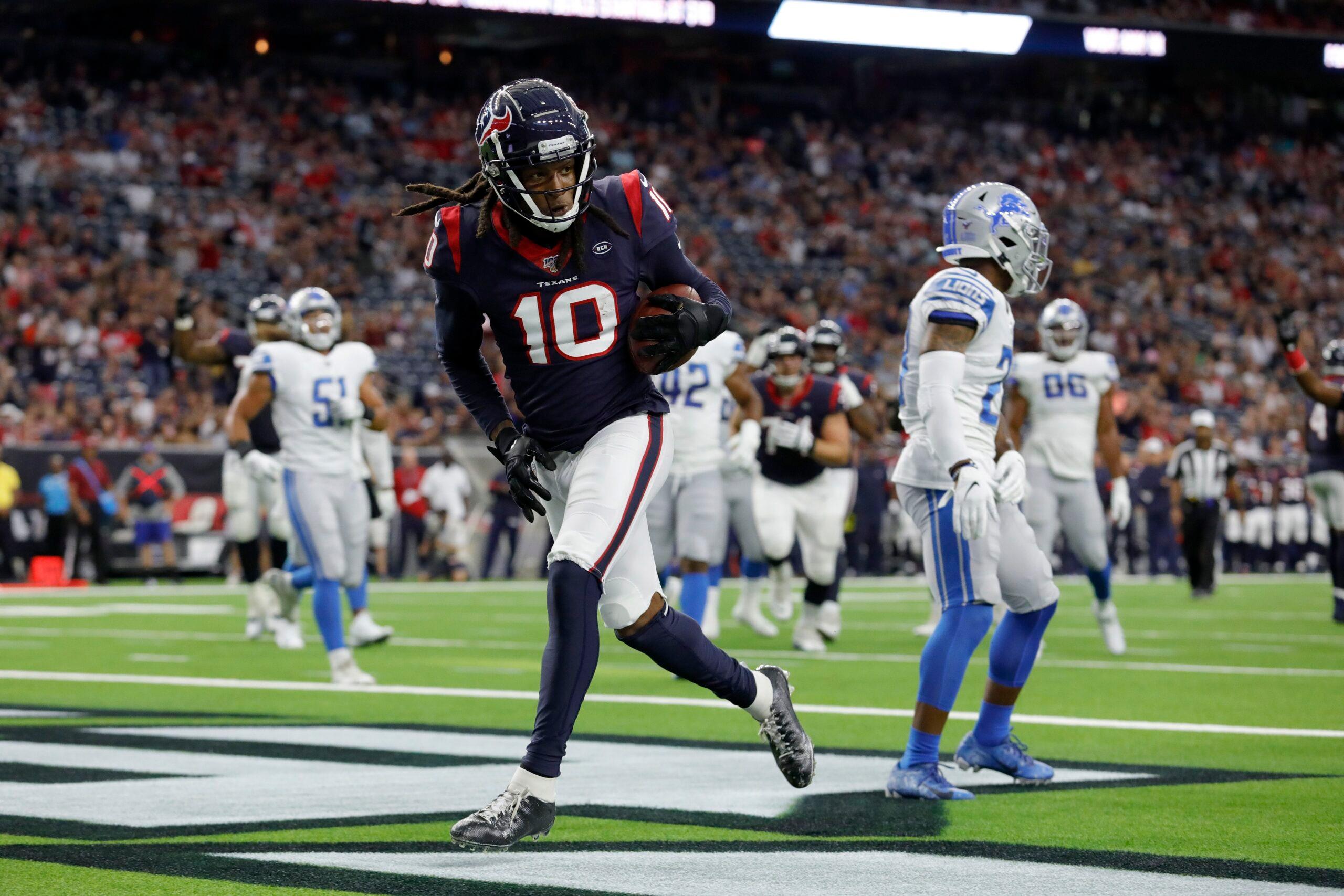
DeAndre Hopkins
While the increase in receivers wearing lower jersey numbers has been steady, the 80s held surprising relevance at the position for a long time. By 2010, more than half of the top 25 receivers by total yardage were rocking numbers between 10 and 19—but eight of the top 10 guys were still in the 80s, including stars who predated the rule change like Andre Johnson (no. 80), Reggie Wayne (no. 87), and Santana Moss (no. 89). It wasn’t until 2013 that a player with a number in the 10-to-19 range (Josh Gordon, no. 12) led the league in receiving yardage. It wasn’t until 2017 that a player with a number in that range (DeAndre Hopkins, no. 10) took the outright lead in receiving touchdowns. Just five years ago, high-numbered receivers still dominated the statistical leaderboard. In 2014, Brown, Demaryius Thomas (no. 88), and Jordy Nelson (no. 87) all ranked among the top four in receiving yards; Dez Bryant (no. 88) was within the top 10 as well.
Now, basically every receiving superstar with a number in the 80s (Andre Johnson, Calvin Johnson, Steve Smith, Reggie Wayne) has retired. The Brown and Cooper defections sealed the deal. In the GIF below, you can see how the top-25 leaderboard in yards among wide receivers has shifted toward players wearing numbers between 10 and 19 over the years, at first gradually and then all at once.
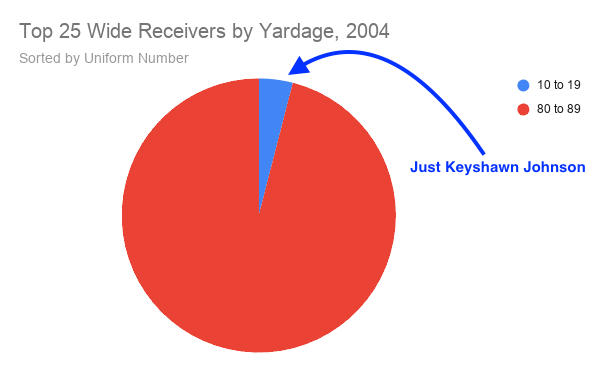
Frankly, I get it. The original notion that wide receivers were given numbers in the 80s was arbitrary. There’s generally a correlation between large numbers and large players throughout the NFL’s numbering system: Kickers and quarterbacks get the smallest numbers (1 to 19), then running backs and defensive backs (20 to 49), linebackers (40 to 59, and also 90 to 99), offensive linemen (50 to 79), and defensive linemen (50 to 99, except 80 to 89). There’s not a perfect correlation here—chunky offensive linemen have higher numbers than lean defensive ends—but you can picture a scrawny kicker wearing no. 1 and a 330-pound nose tackle wearing no. 99 and get the gist. It tracks that bigger guys get bigger numbers, as if the weight of the number provides heft.
Yet, inexplicably, wide receiver numbers were slotted in between those of offensive and defensive linemen, the fastest position group sandwiched in the middle of the two slowest groups. Why? I’m not sure there’s ever been an explanation. Tight ends still have to wear numbers in the 80s, and no receiver wants to be confused with a tight end. And it’s not like giving wide receivers numbers in the 80s is common at other levels of football. In fact, it’s rare to see a star college receiver with a number in that range. The last Biletnikoff Trophy winner to wear a number in the 80s was Oklahoma State’s Justin Blackmon (no. 81) in 2011. Before that it was Pitt’s Antonio Bryant (no. 80) all the way back in 2000.
There’s an aesthetic issue, too: 1 is the slimmest numeral, while 8 is the digit that takes up the most space. In that ESPN article above, Fitzgerald explained that no. 11 makes him “look sleek.” Roy Williams said that a teammate wearing no. 88 “looks like a big box out there.”
However, I believe it’s time for someone to zag after 15 years of zigging. There was once a novelty to being a wide receiver with a number between 10 and 19. It was a signifier that a player was a member of the NFL’s young, new receiving generation. Now that generation has flooded the league, and the wideouts with numbers in the 80s stand out. The era of wide receivers wearing numbers in the 80s is dead—but it’s almost time for some iconoclast to turn the tide back.
